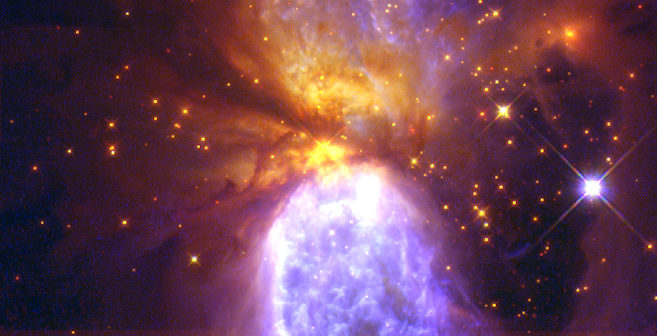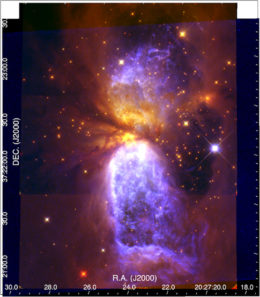The birth of a massive star is anything but calm and peaceful — a fact that is dramatically illustrated in this false-color Hubble image of the star-forming region Sh2-106 (click for the full view, or see below for the original image with scale). This spectacular nebula hides the young massive star S106 IR. Birthed from the tumultuous collapse of its parent molecular cloud, S106 IR grew via rapid accretion until a tremendous explosion rocked the region roughly 3,500 years ago, according to new research led by John Bally (University of Colorado Boulder).
Bally and collaborators have used both new and archival observations of Sh2-106 spanning 16 years to analyze the supersonic motion of the gas sent streaming in the powerful explosion. The authors’ work provides unique insight into the fireworks possible during the final stages of a massive star’s birth. For more information (and more stunning images of Sh2-106!), check out the original article below.Citation
“Supersonic Expansion of the Bipolar H II Region Sh2-106: A 3500 Year Old Explosion?,” John Bally et al 2022 ApJ 924 50. doi:10.3847/1538-4357/ac30de


